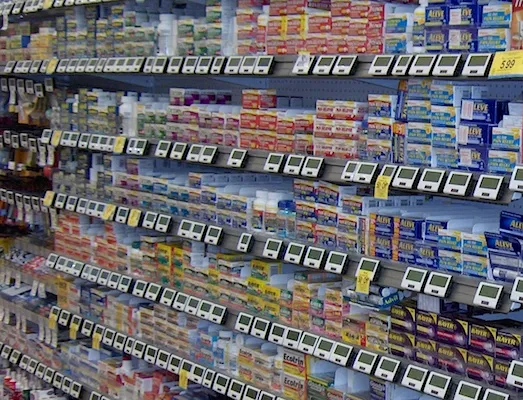ARLINGTON, Va. — The Retail Industry Leaders Association (RILA), Food Marketing Institute, National Association of Chain Drug Stores, National Grocers Association and National Retail Federation have submitted comments on proposals by the Environmental Protection Agency to update waste management regulations that may impact retailers’ handling of unsold consumer products and pharmaceuticals.
RILA said Tuesday that the EPA’s proposed Hazardous Waste Generator Improvements and Management Standards for Hazardous Waste Pharmaceuticals aim to address retailer compliance challenges with the Resource Conservation and Recovery Act (RCRA). Typically, the RCRA applies to large-scale manufacturing plants that generate larger quantities of hazardous wastes, but the EPA also applies the act to the very small percentage of unsold consumer products that may be recycled, reused or discarded from a retail store, the association explained.
Almost all of these products are sold to customers and are consumed or disposed of in their households, without additional regulation, RILA noted.
Specifically, the proposed rules would allow a waste generator to avoid increased burdens of a higher generator status when generating large quantities of hazardous waste “episodically,” i.e. unexpectedly and infrequently. Such episodes may be the result of broken or damaged customer returns, theft or damage within the store, public dumping in trash receptacles or recalls of unusable products.
The proposals also would allow very small quantity generators to consolidate hazardous wastes from multiple locations at a “large quantity generator” site, such as a distribution center, in turn eliminating the disproportionate regulatory burdens of a higher generator status at store-level, provided certain conditions are met.
In addition, the rule proposals would let health care facilities manage hazardous waste pharmaceuticals under tailored, sector-specific regulations and relax the requirements for managing empty pharmaceutical containers.
The EPA also has solicited comment on potential amendments to the heightened “acute” hazardous waste classification for smoking cessation products, such as low-concentration nicotine patches, gums and lozenges, which subjects retailers to additional in-store requirements.
“This is an important step forward, and the retail associations welcome the opportunity to respond to these long-awaited proposals,” Sue Pifer, vice president of compliance at RILA, said in a statement. “Although portions of the proposals may offer some relief, the suggested frameworks fall short of easing the burden on retailers who want to manage unsold products in a more sustainable fashion, rather than discarding potentially useful or recyclable items.
“The retail associations again emphasize in their comments that most unsold consumer products and pharmaceuticals are not ‘wastes,’ due to the fact that many are suitable for reshelving, donation, recycling, liquidation or shipment back to vendors for credit,” Pifer added. “We look forward to continuing our work with the EPA to further the agency’s understanding of the unique challenges faced by the retail sector in reverse distribution.”
Reverse distribution involves the removal and consolidation of consumer products and pharmaceuticals not sold in retail stores. According to RILA, the process is “a long-standing business practice that is friendly to the environment and good for consumers” and the practice “predates the arcane application of RCRA to retailers’ reverse distribution operations.”
RILA added that last year it led a coalition of retailers to explain the challenges of complying with RCRA, and some of the issues raised by the coalition were addressed in the proposed rules.
Both of the proposed rules were signed by the EPA administrator on Aug. 25 and released on Sept. 25, 2015. The Hazardous Waste Generator Improvements rule proposes a much-needed update to the hazardous waste generator regulations to make the rules easier to understand, foster better compliance, provide greater flexibility in how hazardous waste is managed and close important gaps in the regulations, according the the EPA. The agency said the Management Standards for Hazardous Waste Pharmaceuticals rule is aimed at improving the management of hazardous waste pharmaceuticals at health care facilities — including hospitals, clinics and retail stores with pharmacies — and at reverse distributors to improve environmental protection.









